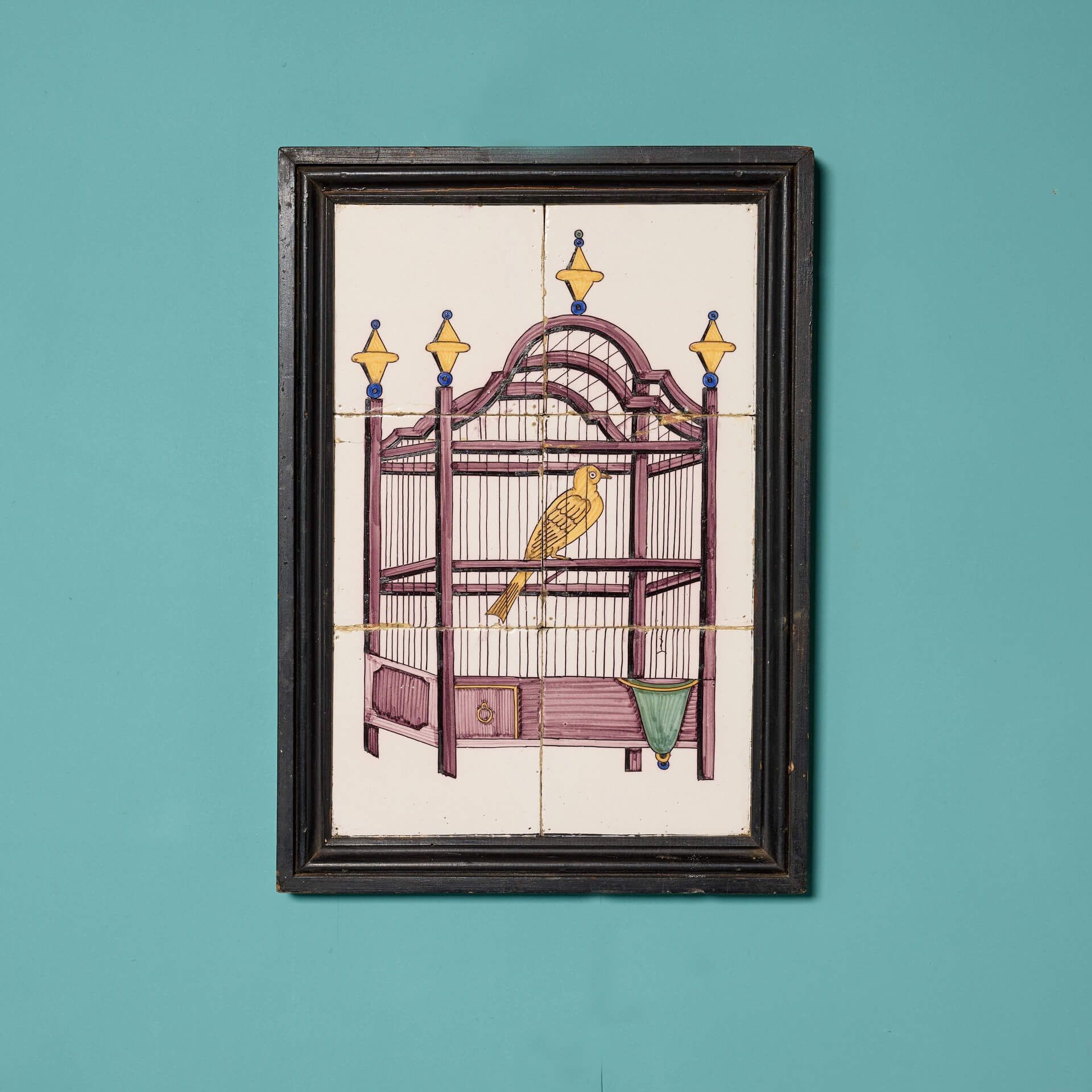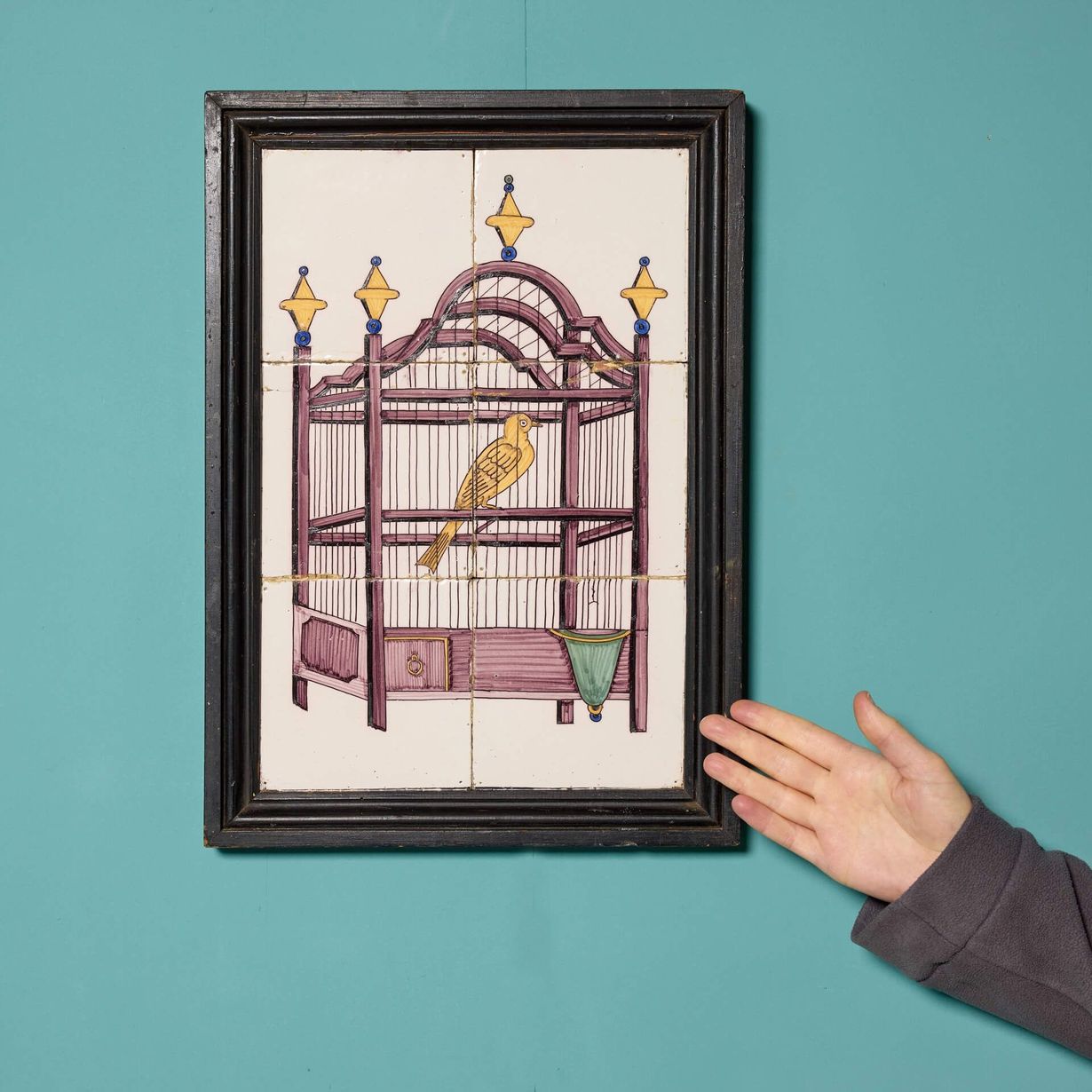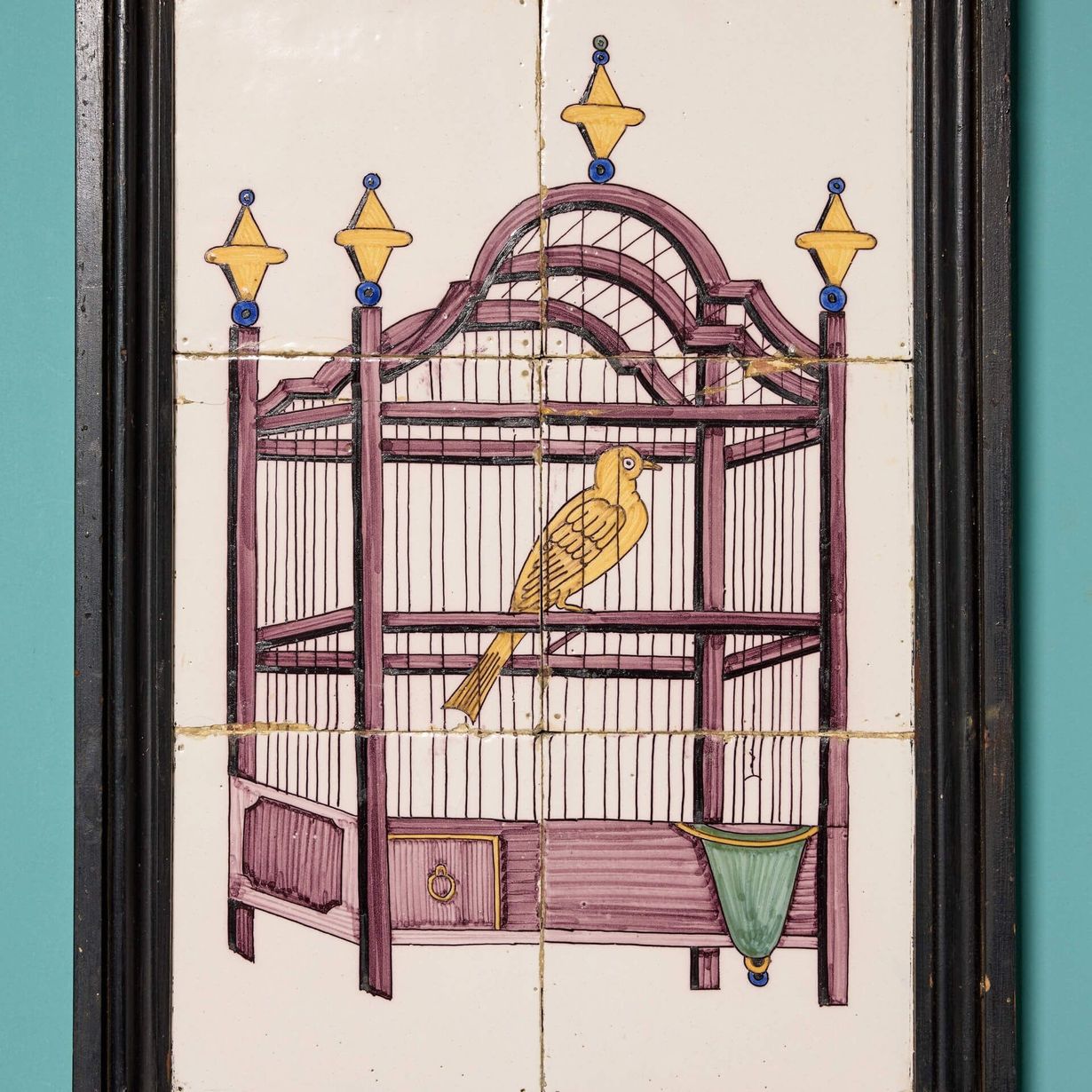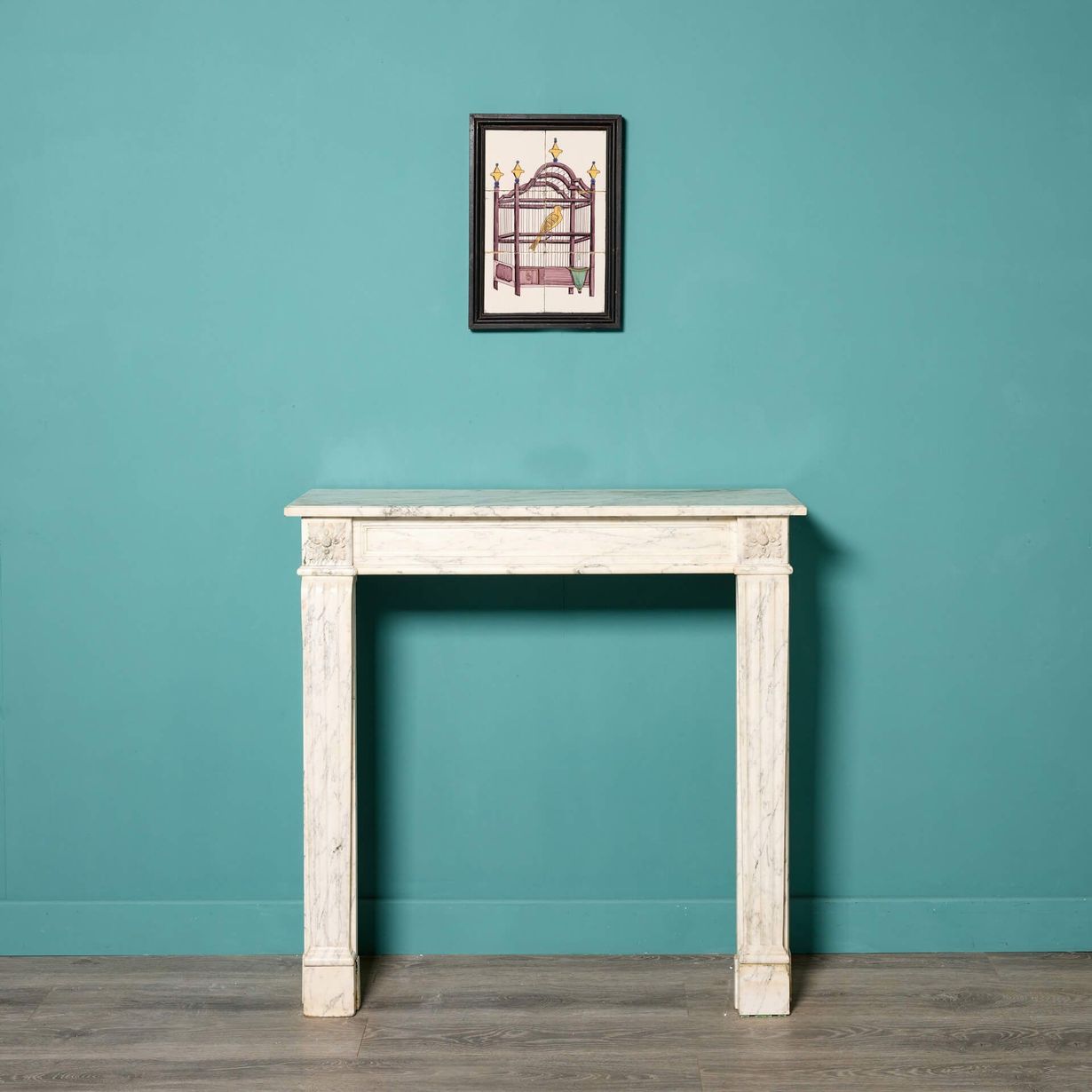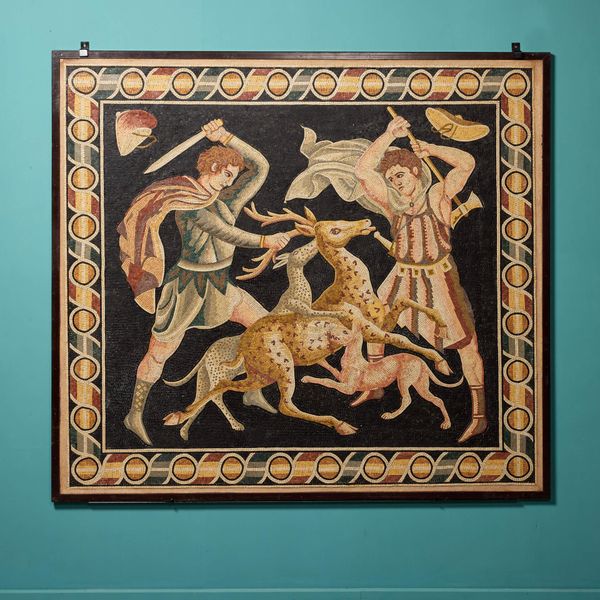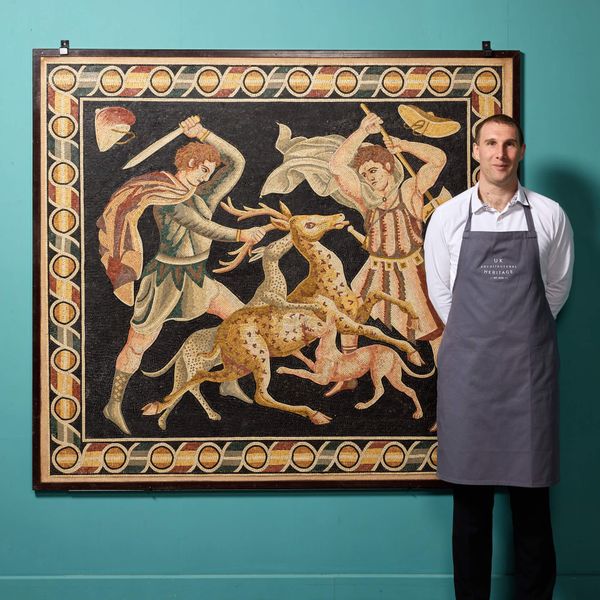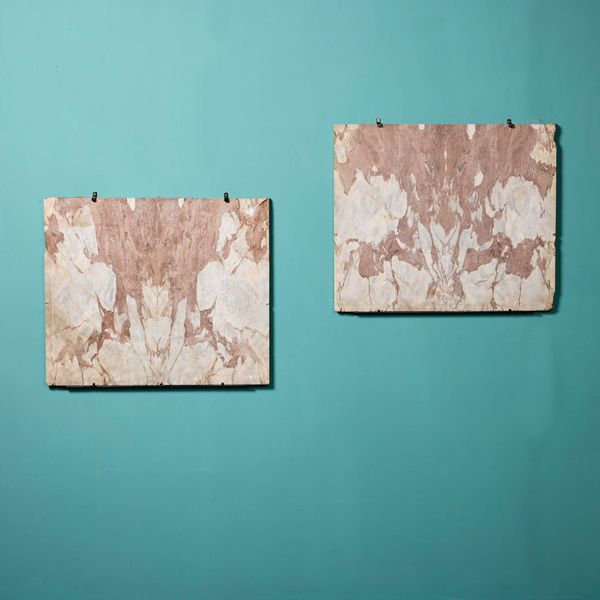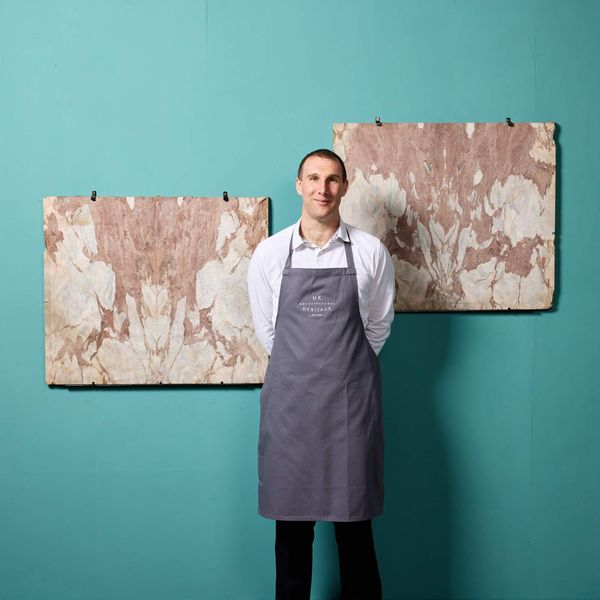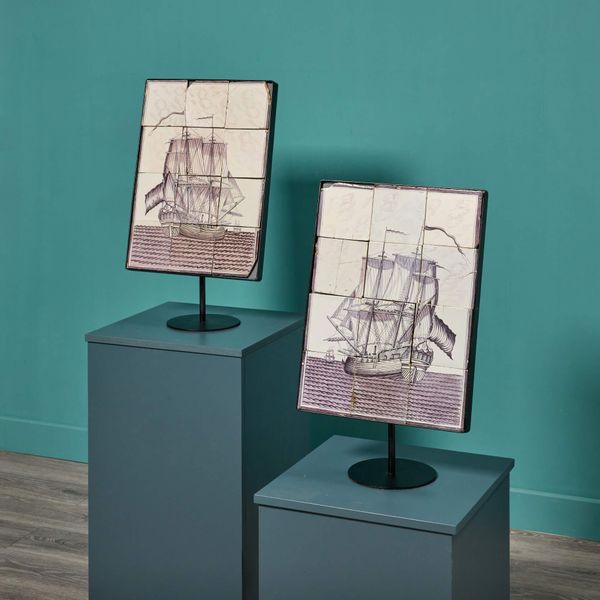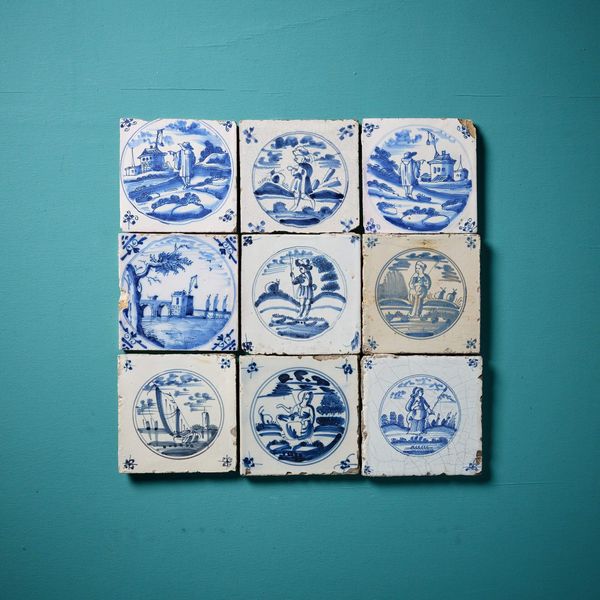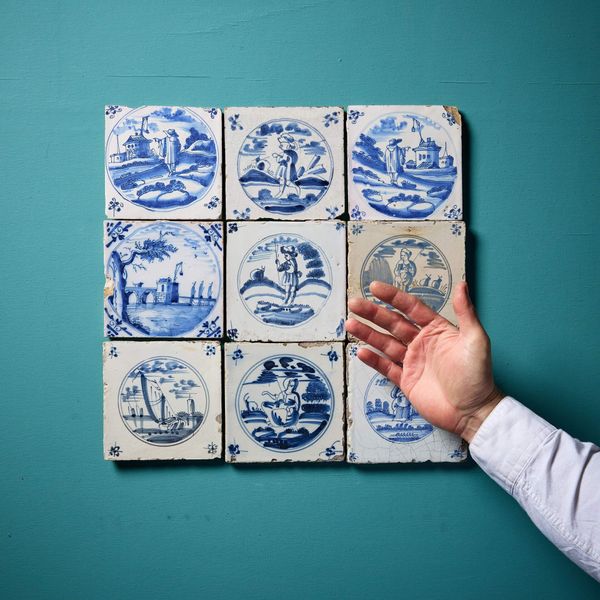About this piece
back to topThis antique framed tile panel depicting a bird in a decorative cage, sourced from the estate of Dame Barbara Mary Quant, is quite the find. Displayed in a frame, the tiles make a beautiful artwork piece, looking wonderful hung on the wall of period and contemporary properties alike. Dating to circa 1800, this is an excellent example of early Delft work, preserved throughout history for over 200 years.
Georgian and Victorian in style, this panel houses six handmade manganese tiles which together depict the bird scene.
Mary Quant
Dame Barbara Mary Quant (Feb 1930-April 2023) was an English fashion designer for young people in the 60s. She was known for achieving the ‘Chelsea look’ and the widespread popularity of the miniskirt and hot pants.
Quants work reflected a shift in fashion and the inspiration she offered young people. She was given an OBE (Officer of the Order of the British Empire) in 1966 and a DBE (Dame Commander of the Order of the British Empire) in 2015.
This tile panel was owned by this influential and inspirational lady, adding to their unique history.
Delft Tiles
Delft dates back as far as the early 1500s. The Dutch city of Delft, after which the pottery is named, was the major centre of its production. Tiles and pottery made from Delft are applied with a tin and magnesium glaze that gives them their distinctive purple-blue colour.
Their well-known blue and white tiles appeared around 1620 and became world famous, the tiles often painted with scenes from daily life and used to decorate kitchens, chimneypieces, staircases and more.
We have a similar panel of a cat in landscape available.
